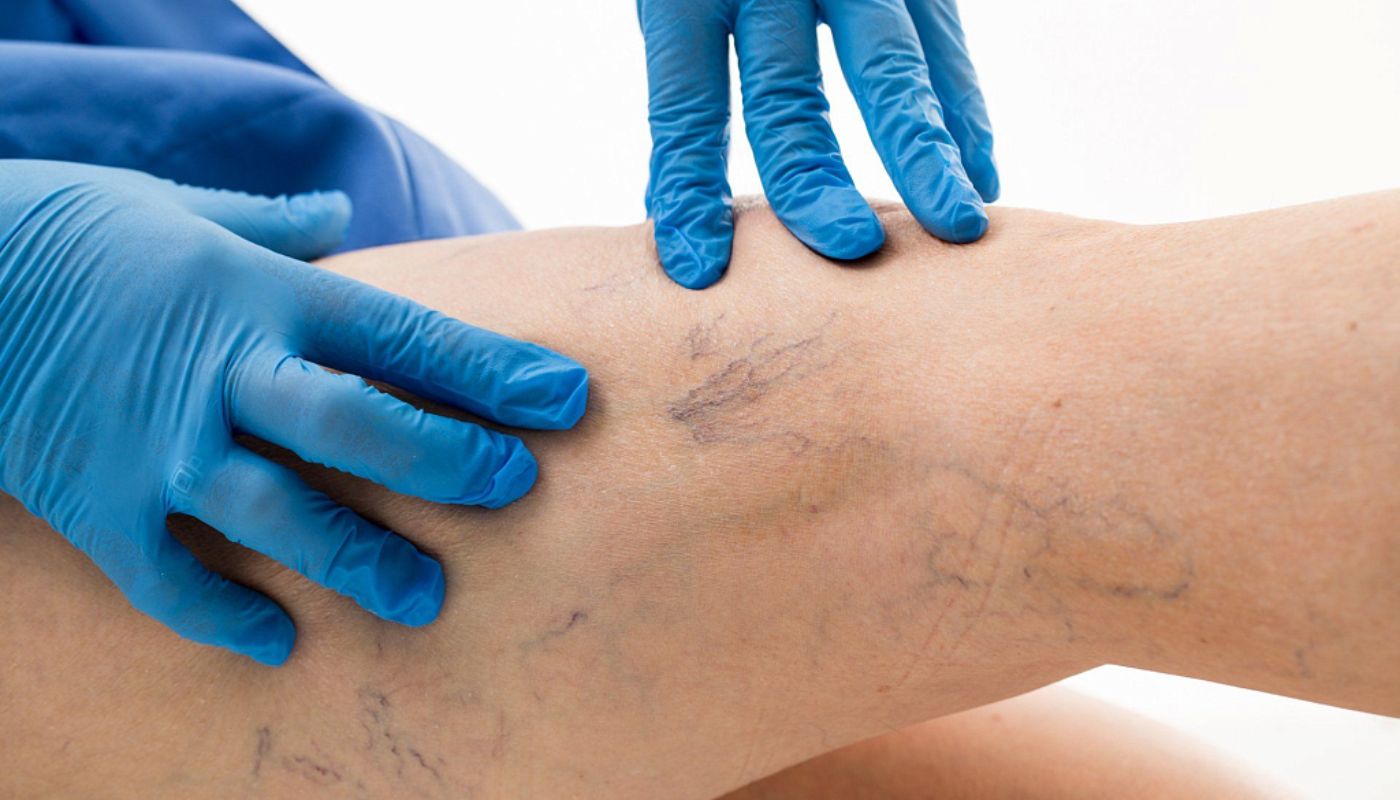
Healing Hope: Specialized Diabetic Foot Wounds Treatment at Sadhana Clinic
What Is Spider Veins?
Who is likely to get varicose veins?
Genetics (Family History)
A family history of varicose veins can significantly increase the risk. If close family members, such as parents or siblings, have varicose veins, there is a higher likelihood of developing them.
Age
The risk of varicose veins tends to increase with age. As individuals get older, the veins may lose their elasticity, and the valves may weaken, leading to blood pooling in the veins.
Gender
Women are more likely than men to develop varicose veins. Hormonal changes during pregnancy, menstruation, and menopause, as well as the use of hormonal contraceptives, can contribute to their development.
Pregnancy
Pregnancy increases the pressure on the veins in the pelvic area and legs, potentially leading to the development or worsening of varicose veins. The risk may be higher during the later stages of pregnancy.
Obesity & Excess Weight
Carrying excess weight puts additional pressure on the veins, especially in the lower body. This can contribute to the development of varicose veins.
Occupation & Lifestyle
Jobs or activities that involve prolonged periods of standing or sitting may hinder proper blood circulation, increasing the risk of varicose veins. Lack of physical activity can also contribute.
History of Deep Vein Thrombosis (DVT) or Blood Clots
Individuals with a history of deep vein thrombosis or blood clots may have an increased risk of developing varicose veins.
Prior Leg Injury or Surgery
Previous injuries or surgeries in the leg area may impact vein function and contribute to the development of varicose veins.
Diagnosis & Tests for Varicose Veins
Doppler Ultrasound
Doppler ultrasound is a common diagnostic test for varicose veins. It uses sound waves to create images of blood flow in the veins. This test helps evaluate the blood flow and identify any abnormalities, such as reflux or valve dysfunction.
Duplex Ultrasound
Duplex ultrasound combines traditional ultrasound with color Doppler imaging. This provides a more detailed picture of the veins and blood flow, helping to assess the extent and severity of varicose veins.
Venous Reflux Studies
These studies involve assessing the blood flow direction and identifying any reflux or backflow of blood in the veins. This helps in determining the functionality of the valves in the veins.
Venogram
A venogram is a more invasive test that involves injecting a contrast dye into the veins, followed by X-ray imaging. This can provide detailed images of the veins and help identify blockages or abnormalities.
CT or MRI Scans
In certain cases, computed tomography (CT) or magnetic resonance imaging (MRI) scans may be used to obtain detailed images of the veins and surrounding structures.
Treatment & Prevention for Varicose Veins
Lifestyle Changes
Exercise: Regular physical activity helps improve circulation and strengthen leg muscles.
Weight Management: Maintaining a healthy weight reduces pressure on veins.
Avoiding Prolonged Sitting or Standing
Changing positions and taking breaks during prolonged sitting or standing prevents blood pooling.
Sclerotherapy
A minimally invasive procedure where a solution is injected into the affected veins, causing them to collapse and eventually fade.
Vein Stripping & Ligation
Traditional surgical methods involving the removal or tying off of the affected veins. Less common due to minimally invasive alternatives.
Healthy Diet
Consume a diet rich in fiber and low in salt to promote cardiovascular health.
Avoid High Heels
Choose comfortable footwear and avoid high heels for extended periods.
- Visible Veins: Bulging, twisted, or rope-like veins that are visible beneath the skin, often on the legs.
- Discoloration: The veins may appear dark purple or blue.
- Swelling: Swelling in the legs, especially around the ankles and calves.
- Aching or Throbbing: Aching or throbbing pain in the legs, especially after prolonged standing or sitting.
- Heaviness: A sensation of heaviness or fullness in the legs.
- Itching and Burning: Itching or burning sensations near the affected veins.
- Age: The risk increases with age as vein elasticity decreases.
- Pregnancy: Hormonal changes and increased pressure on veins during pregnancy contribute to their development.
- Lack of Physical Activity: Insufficient movement can impair blood circulation.
- Previous Leg Injuries: Injuries or surgeries in the leg area may affect vein function.
- Sun Exposure: Prolonged sun exposure may contribute to spider veins (a milder form).